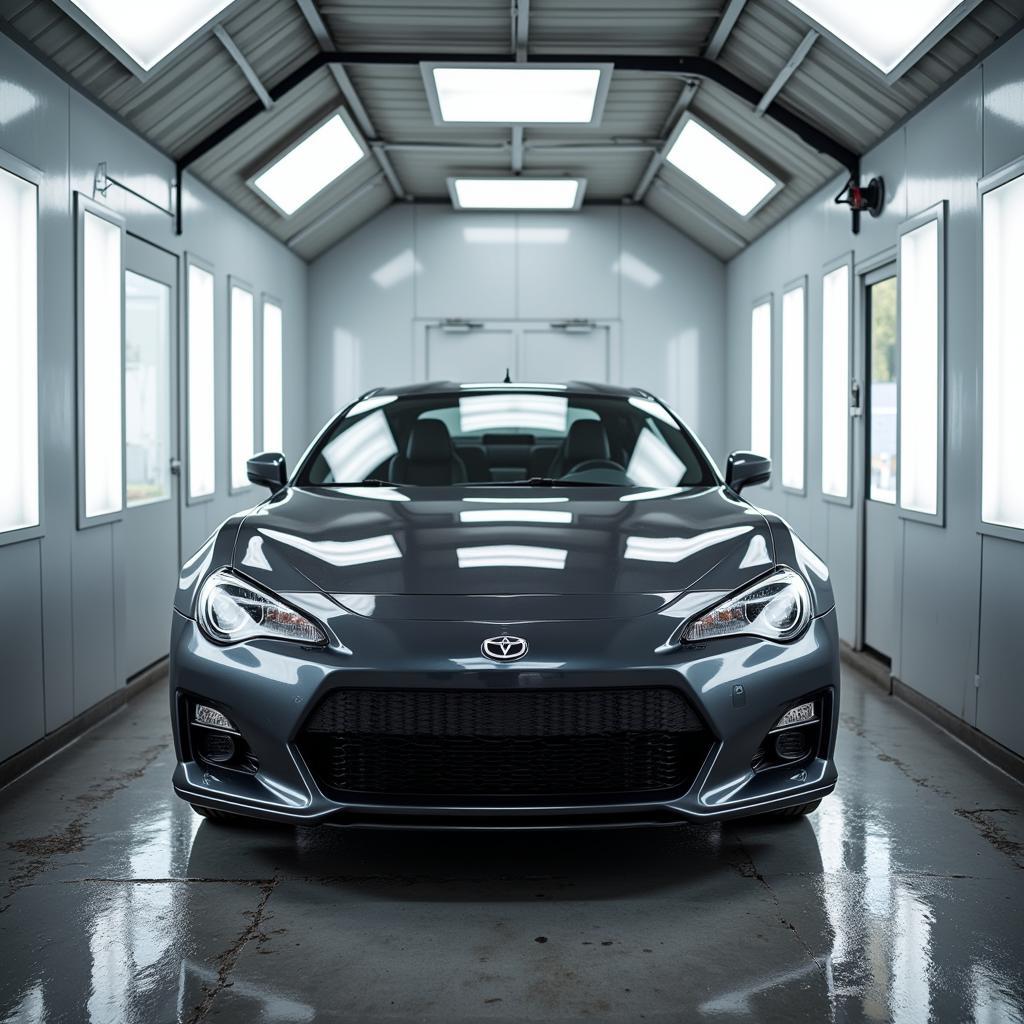Dealing with lacquer peeling off your car? This is a common issue that can make your vehicle look older than it is. This guide will help you understand why car lacquer peels, how to fix it yourself, and when to seek professional help.
Why Does Car Lacquer Peel?
Several factors contribute to lacquer peeling, from environmental damage to improper car care. One of the most common culprits is UV exposure. The sun’s harmful rays can break down the lacquer’s chemical bonds, causing it to become brittle and peel. Another factor is oxidation. This occurs when the lacquer reacts with oxygen in the air, leading to a dull, chalky appearance and eventual peeling. Incorrect application of the lacquer during the painting process can also lead to premature peeling. Finally, harsh weather conditions, like extreme temperatures and acid rain, can damage the lacquer over time.
How to Fix Lacquer Peeling Off Your Car: A DIY Approach
If the peeling is minor, you can attempt a DIY fix. This involves cleaning the affected area, sanding down the loose lacquer, applying primer, and finally, repainting.
- Clean the Area: Thoroughly wash the affected area with car wash soap and water, then dry it completely. This removes dirt and grime that could interfere with the repair.
- Sand the Loose Lacquer: Using fine-grit sandpaper (around 2000-grit), gently sand the peeling lacquer edges to feather them into the surrounding paint. Be careful not to sand too aggressively, as you could damage the underlying paint layers.
- Apply Primer: Apply a thin, even coat of automotive primer to the sanded area. This provides a smooth base for the new paint to adhere to. Let the primer dry completely according to the manufacturer’s instructions.
- Repaint: Apply several thin coats of automotive paint that matches your car’s color. Allow each coat to dry before applying the next. Finish with a clear coat to protect the paint and restore shine.
When to Seek Professional Help
While a DIY approach can work for minor peeling, more extensive damage requires professional attention. If the peeling is widespread or has reached the underlying paint layers, it’s best to consult a qualified auto body repair shop. They have the expertise and equipment to properly address the issue and ensure a long-lasting repair.
“Dealing with significant lacquer peeling requires a professional’s touch. They can assess the damage, match the paint perfectly, and ensure a seamless repair,” says John Davis, Senior Automotive Technician at Smith Auto Body.
Preventing Lacquer Peel: Proactive Measures
Preventing lacquer peel is easier than fixing it. Regularly waxing your car provides a protective layer against UV rays and other environmental factors. Parking in a garage or shaded area whenever possible minimizes sun exposure. Washing your car regularly removes contaminants that can damage the lacquer.
Professional Lacquer Repair: What to Expect
A professional repair typically involves stripping the old lacquer, preparing the surface, and applying new paint and clear coat. This process can take several days, depending on the extent of the damage.
“Investing in professional repair ensures a high-quality, durable finish that restores your car’s appearance and protects it from further damage,” adds Sarah Miller, Auto Paint Specialist at Miller’s Auto Refinishing.
 Professional car lacquer repair process
Professional car lacquer repair process
Fix Lacquer Peeling: Key Takeaways
Addressing lacquer peeling promptly prevents further damage and maintains your car’s value. Whether you opt for a DIY fix or seek professional help, taking action is crucial. Remember that prevention is always the best approach.
Need assistance with car lacquer peeling or any other auto issue? Contact AutoTipPro at +1 (641) 206-8880. Our office is located at 500 N St Mary’s St, San Antonio, TX 78205, United States. We’re happy to help!




Leave a Reply